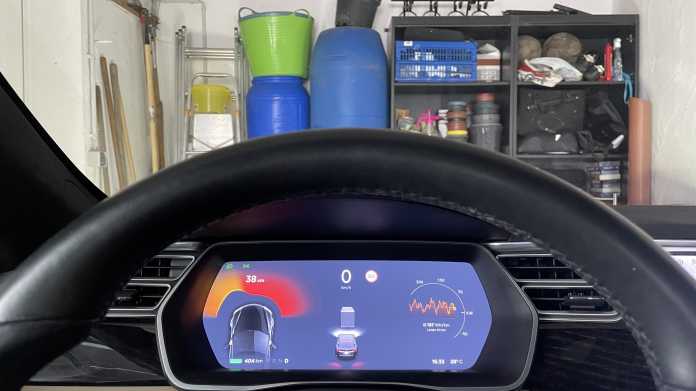The lawsuit against Tesla was filed by a Tesla driver in the US state of Illinois. It could result in a class action lawsuit that could cost Tesla dearly if successful.
In the complaint (PDF) it is said that the collision monitoring in the Tesla would also be active when the line of sight is clear and there are no vehicles in front. It first triggers a loud warning tone and then automatically brakes – also known as “phantom braking” – if the user does not intervene within a very short time. This also happens when there is no risk of a collision at all and endangers cars driving directly behind the Tesla. The faulty system could trigger a collision instead of preventing it.
In a report on long-term experience with the Tesla, c’t also criticized the automatic distance control, among other things. It says: “The car often slows down unexpectedly because it misjudges the situation. If you have left the degree of recuperation at the default setting, this is equivalent to significant braking.” Although the electronics activate the brake lights, drivers of following vehicles should still be surprised if, for example, there is no need to brake in front of the Tesla on an empty motorway; they can also be forced to make emergency stops.

The Tesla S 90D’s object detection held a shelf in a garage for a truck (grey icon in the center of the vehicle display).
“Such unexpected braking happens in populated areas, when pedestrian islands are cornering, or when approaching dark, steep underpasses. On country roads, this happens at normal speeds (80 to 90 km/h) before elevated curves with crash barriers, and on both country roads and also on freeways when driving straight up steep hills (e.g. freeway A7, on a section in the mountains near Kassel). At all these points the car apparently suspects large objects on a collision course.”
During a test drive in the Vegas Loop with Tesla vehicles, it also turned out that autonomous driving was not possible because the vehicles’ distance warning devices were regularly overwhelmed when crossing from the tunnel to the bus stops.
Higher insurance premium
In addition, the warnings followed by sudden braking affected the plaintiff’s insurance premium, since he took advantage of the insurance offered by Tesla, which sets the premium based on, among other things, driving behavior. Frequent security alerts would result in a higher premium.
The plaintiff claims that Tesla is aware of the incorrect collision warning because many other Tesla drivers have already complained about it. According to the complaint, the collision message would be triggered when the driving surface was changed on darker asphalt or when the car passed an underpass or steep inclines. The National Highway Traffic Safety Administration (NHTSA) would also receive hundreds of such complaints about the collision warning in the Tesla. However, the company has so far not been able to correct the supposed security function with any software updates.
class action lawsuit threatened
The plaintiff himself drives a Tesla Model 3 from 2021, but the inappropriate collision reports also occur in other models. The automaker is now threatened with a class action lawsuit in the United States based on the Illinois civil law chapter 735 ILCS 5/2-801. It is usual
(uk)
